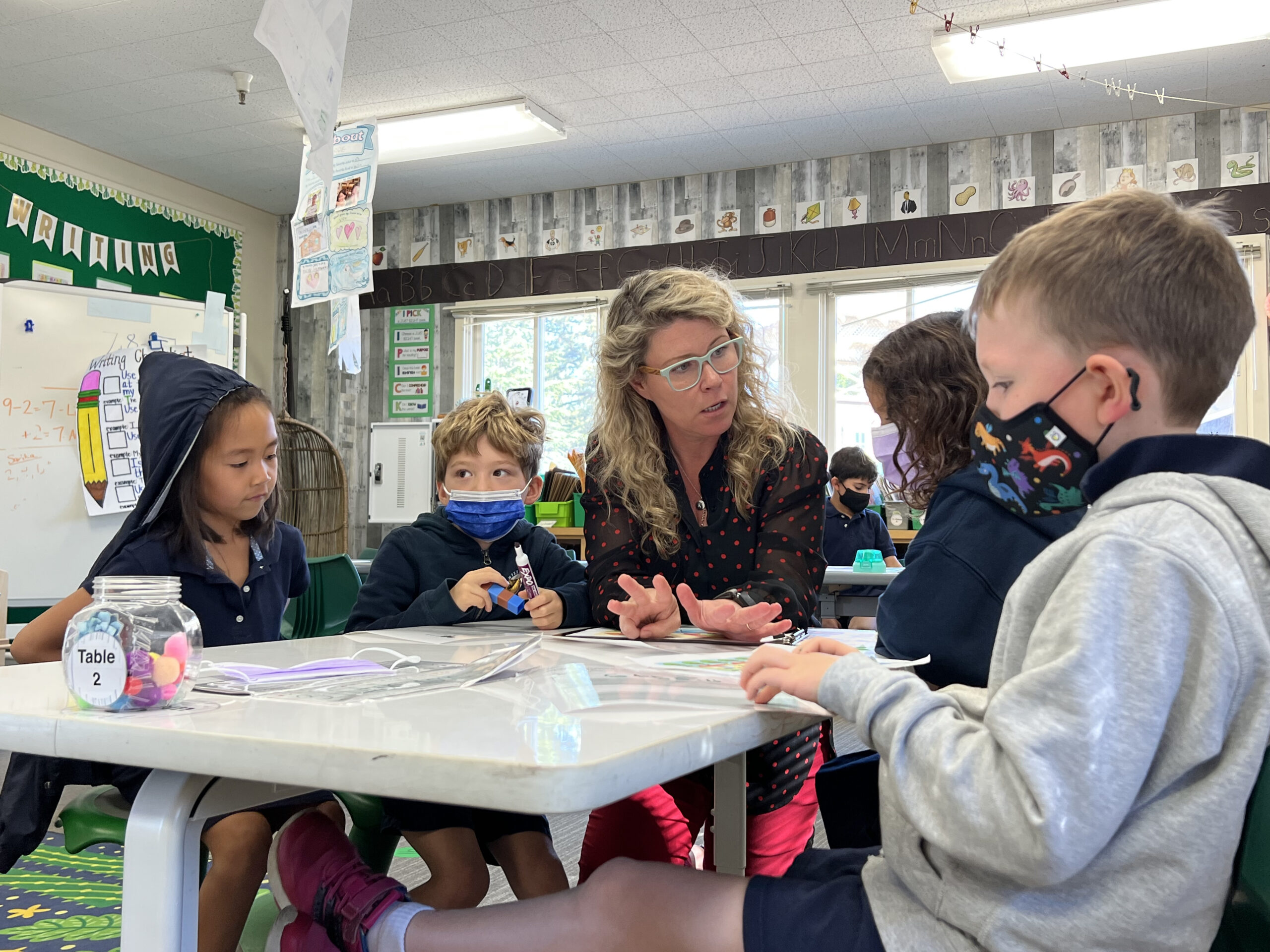“I disagree. I counted by tens then by ones and got 48.”
“I disagree because I counted by tens and saw it wasn’t 50. So then it was two less and that’s 48!”
1st Grade Mathematicians are deep in a unit to expand their understanding of place value, and to flex the counting and arithmetic skills they have been developing all year. As they build, count by ones and tens, group, write number sentences and decompose numbers to represent them in more than one way, students develop fluency with the concept that two digit numbers, up to 99, show an amount of tens and ones. In 1st Grade all year students do much of their math learning in three or four differentiated small groups, combining students across the two cohorts for math learning at their “just right” challenge level on the same curricular focus.
I disagree because I counted by tens and saw it wasn’t 50. So then it was two less and that’s 48!
On Thursday, students in one room were using manipulatives to compare their findings to a character in their math book, agreeing or disagreeing with his counts and providing evidence. In the next room, students were documenting different ways to count large collections of objects, organizing the objects into groups of tens and then some ones and discussing and documenting their work. In the third room, students answered “pattern detective” problems, looking for an arithmetic pattern in a sequence of two-digit numbers then filling in missing numbers. They analyzed the various patterns by discussing which was most different from the others and why. Then they did an activity to show how two-digit numbers can be made up of more than one combination of tens and ones. For example, how many combinations of tens and ones can you use to make 58? Students each worked with their own numbers and compared strategies, like, how could you know that you’ve come up with all the ways to make 58 with tens and ones?

